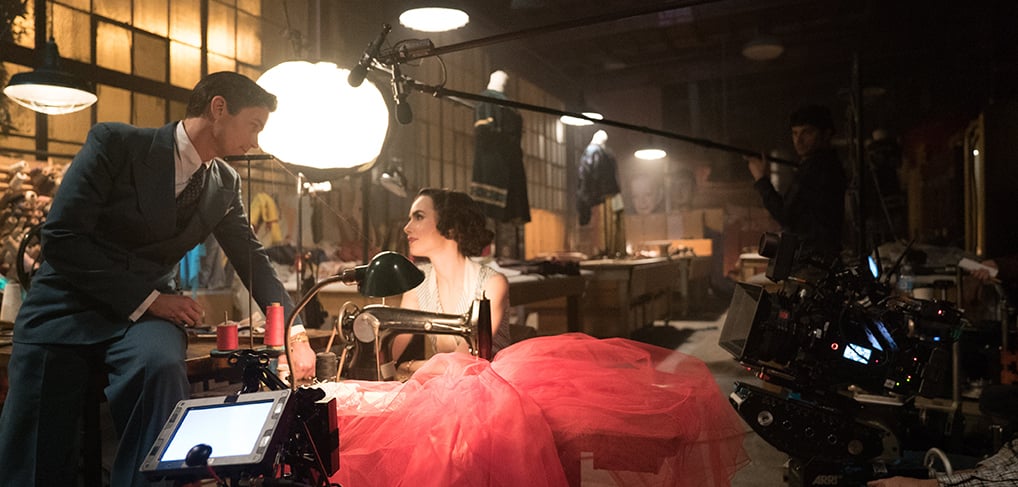
The Last Tycoon: Classic Hollywood
Cinematographer Danny Moder and director Billy Ray balance vintage styles and modern sensibilities on Amazon’s old-Hollywood series.
Photos by Adam Rose and Jennifer Clasen, courtesy of Amazon Studios.
On a soundstage of a historic studio lot that was once the stomping grounds of John Ford, William Wyler and countless other Hollywood legends, a group of contemporary filmmakers gathers to re-create a bygone era for an episode of Amazon’s new series The Last Tycoon. Based on an unfinished novel by F. Scott Fitzgerald, the show follows boy-wonder producer Monroe Stahr (Matt Bomer) and studio head Pat Brady (Kelsey Grammer) as they struggle to reconcile the aesthetic, financial and technical demands of moviemaking in 1930s Hollywood.
On the day that AC visits the set, the crew is shooting a scene where Stahr and Brady face off against labor representatives attempting to unionize screenwriters — a surprisingly timely premise, given that at that very moment a writers’ strike (ultimately averted) is potentially about to descend upon 2017 Hollywood.

The contemporary relevance is not lost on director of photography Danny Moder, who was attracted to The Last Tycoon partly because of what it had to say about where Hollywood started and where it was going. “The script for the pilot really touched on a lot of interesting ideas about the concept of how movies began, how they evolved, how innovative the technology was, and who the revolutionary thinkers were,” Moder says. “These guys were really the Steve Jobs of their day.”
Moder first became aware of the project when he worked with director Billy Ray on the feature Secret in Their Eyes. “I have a hard time looking past whatever job I’m currently doing,” the cinematographer notes, “but Billy kept talking about this Last Tycoon thing — that he might have the rights and he might be able to make it happen. Sure enough, a few months after Secret in Their Eyes came out, Billy asked me to read the script for the pilot.”
Ray, who wrote and directed the pilot for The Last Tycoon before going on to serve as the first season’s showrunner — and director of additional episodes — notes that Moder’s collaboration was essential. “I don’t consider myself to be a naturally gifted shot-maker, so my director of photography has to be,” Ray explains. “Danny’s compositions are phenomenal, and he has a great sense of how and when to move the camera.” Though Moder hadn’t shot a series before, the prospect of reuniting with Ray, combined with the inherently visual nature of the material, inspired him to sign on.
“The period is so cinematic, and it’s such a great subject if you’re a movie lover,” Moder says. “Billy and I had a lot of fun conversations about what we were doing and how it related to film history. We watched Singin’ in the Rain, which is later than the era we’re portraying — which takes place just before it — so how does that style inform what we’re doing? We used a lot of movies from the era as references — like Fritz Lang movies that are so much fun, and that inspire you to ask how they did it with what they had, and why they did it that way.”
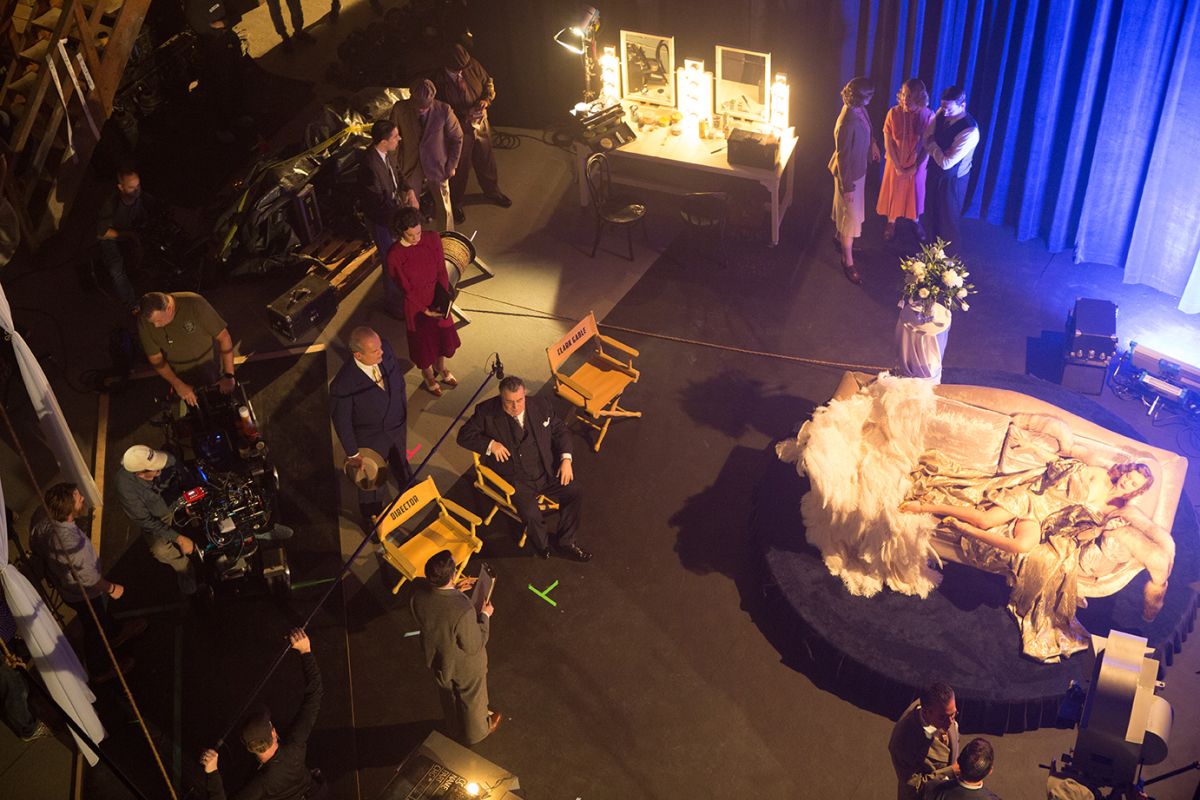
For Moder, part of the challenge was finding the line between remaining true to the style of the period and formulating a visual style appropriate for contemporary audiences. “They used a lot of light in those 1930s movies, and in more obvious ways,” he explains. “Today we’re always trying to be less on-the-nose about where the light’s coming from, or to make it look unlit, and modern audiences expect more contrast. The good news is that even though we’re using a lot of LED fixtures, it’s gotten to the point where we can really soften and color the light, giving it enough density to make it more fitting to this era.”
Ray notes that he and Moder looked at a lot of George Hurrell photography to recapture the look of the period. “You don’t want a story set in 1936 to be screaming with 2017 technology that will pop you out of the story,” he explains. “I thought this subject — the contrast between the dream of Hollywood and the reality of Hollywood, and on a deeper level the question of why that dream is so powerful and has such a hold on us — necessitated a very classic kind of style.”
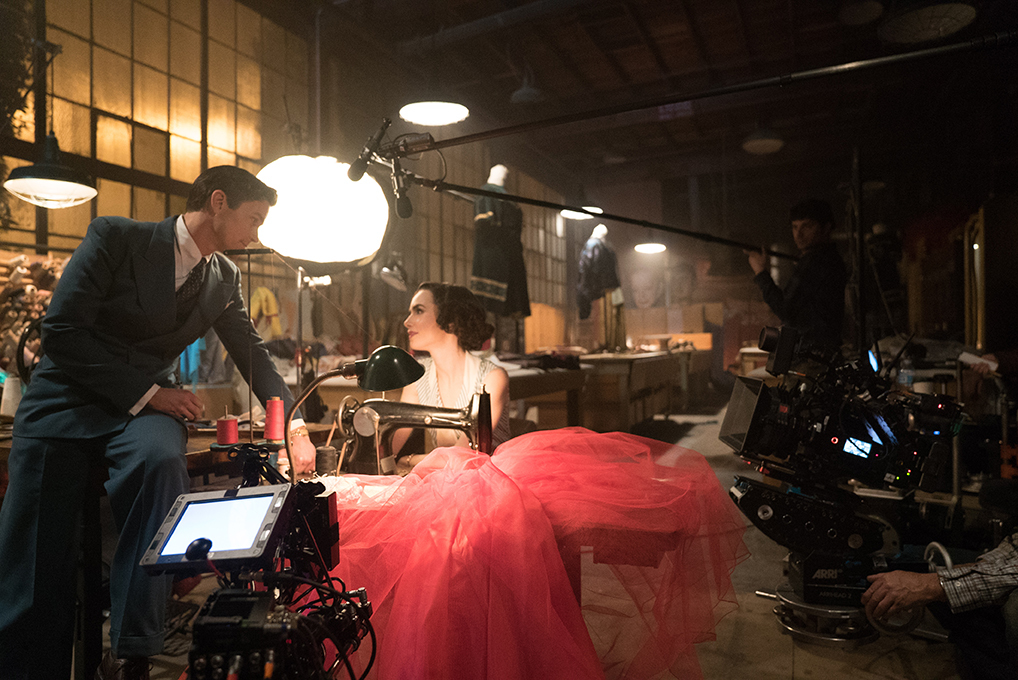
Moder adds that his influences were not limited to films from and about the 1930s. “We talked a lot about The Godfather, which Billy, like so many directors, is obsessed with, as well as Chinatown. For me, John Seale ASC, ACS’s work on The English Patient was extremely important — I wanted to replicate the way he would make you think you were looking at one thing and then reveal it to be something different, which fit in perfectly with the visual language and theme of The Last Tycoon. I also looked at the use of color in Boardwalk Empire and The Crown. I thought that if we could aim for that level of photography with our budget, our crew, and our time, that would be pretty great.”
Those budget and time limitations became more pronounced when The Last Tycoon was picked up for series. “The pilot was done in 12 or 13 days, and we got some pretty good work done,” Moder recalls. “We were working with a phenomenal production designer, Patrizia von Brandenstein, and a great costume designer, Janie Bryant — and my crew was incredible. It just all felt right.”
Moder was initially resistant to continuing on the series, out of fear that the tighter nine-day schedule would require too many compromises to the visual style, but his fondness for the initial scripts and the environment that Ray had devised changed his mind. “You can’t help but be amazed by the costumes and production design,” Moder enthuses. “The places we get to go, the cars we get to see, and Billy’s writing all just give you an amazing opportunity — as does his generosity to every single person on the crew.”
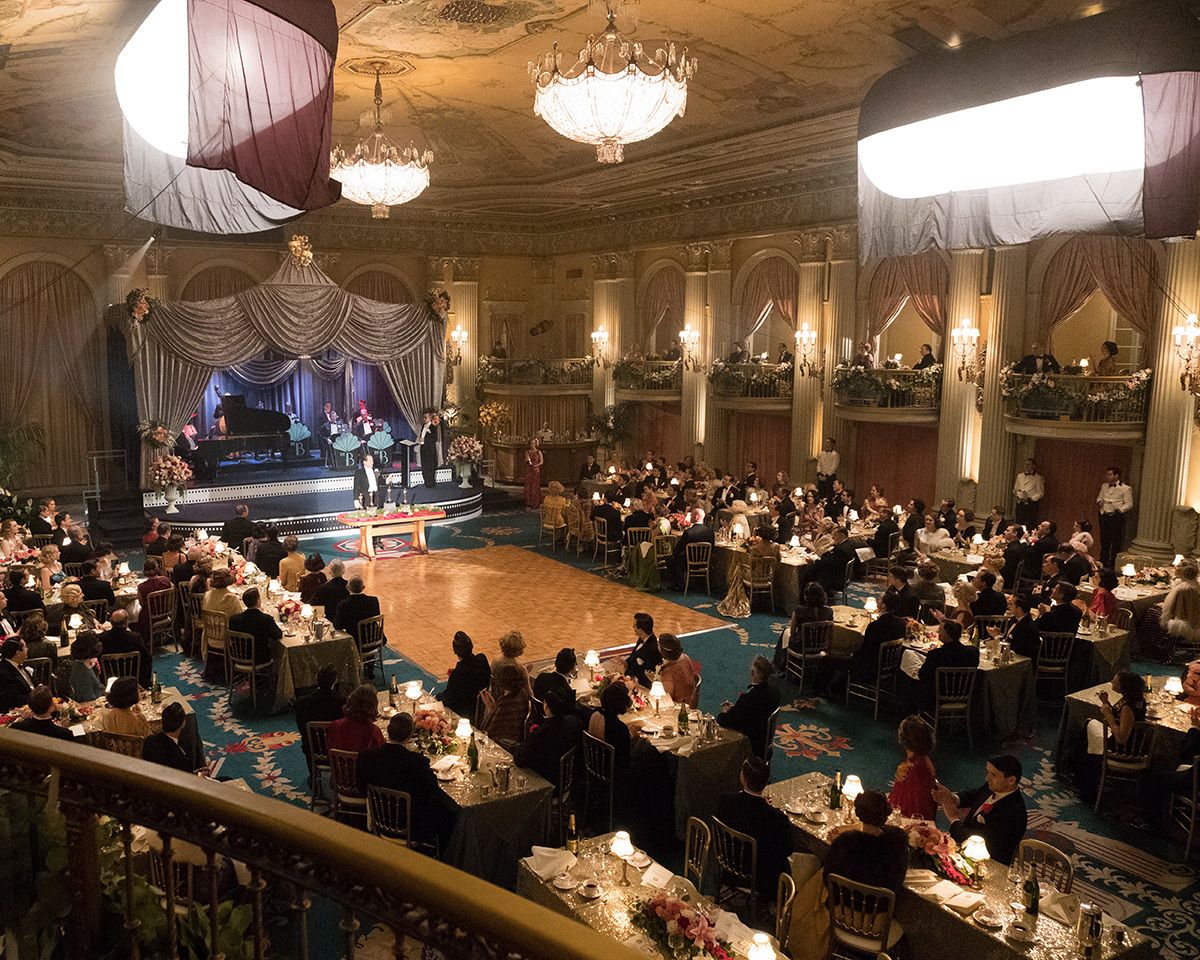
Ray reciprocates Moder’s compliment by adding that the cinematographer is as adept at the “non-glamorous” aspects of photography as he is at the aesthetically rewarding ones. “I’ve been on sets where the director of photography and the first AD are always arguing about schedule versus style, or the cinematographer and the production designer are always arguing about whether or not the sets are camera-friendly,” Ray says. “With Danny, there’s a strong point of view and a strong aesthetic, but a complete absence of ego. The best idea wins and he doesn’t care where it came from. That said, 90 percent of the time it came from him.
“He also has instant credibility with actors, because they know he’s going to take care of them,” Ray adds. “He speaks their language, so there’s never a hassle about camera versus performance — ever.”
Moder notes the importance of communicating his plan to the performers so they can integrate what they’re doing with the cinematography. “The lighting on this show is kind of specific,” he says. “It’s not just, ‘We’ll hit it anywhere.’ Every scene is an opportunity, and it’s something that somebody has written down, and there have been hundreds of meetings about it — about wardrobe and everything else. You try to feel out the sensitivity of the scene, and work out how it will be most powerful with everybody.”

For Moder, preparation is also key in terms of accomplishing a feature-film look on a television schedule. In fact, he notes that “there’s a line in the pilot where Monroe says something like, ‘I’m not good enough to be unprepared’ — and Billy used to say that a lot when we were making Secret in Their Eyes. We have in-depth shot-list meetings — not to lock ourselves into anything, as it could all go out the window, but so that we don’t have to worry about standing on a set with 50 people staring at you and wondering what they’re supposed to do.”
Ray adds, “The bigger virtue of shot-listing is that it forces you to ask yourself what the scene is really about. Is it about a shifting power dynamic? Is it about two people falling in love? Is it about tension in a given circumstance? Once you know what the scene is about, you know where the camera should go and how long it should stay there. Then if you get to the set and all of a sudden the cinematographer or an actor or a grip has an idea, you can react to it because it doesn’t change what the scene is about. The rigor that you have imposed upon yourselves now starts to pay off, because it doesn’t matter if you’re making adjustments to your shot list, as long as the scene is still about the same thing — that’s the North Star.”
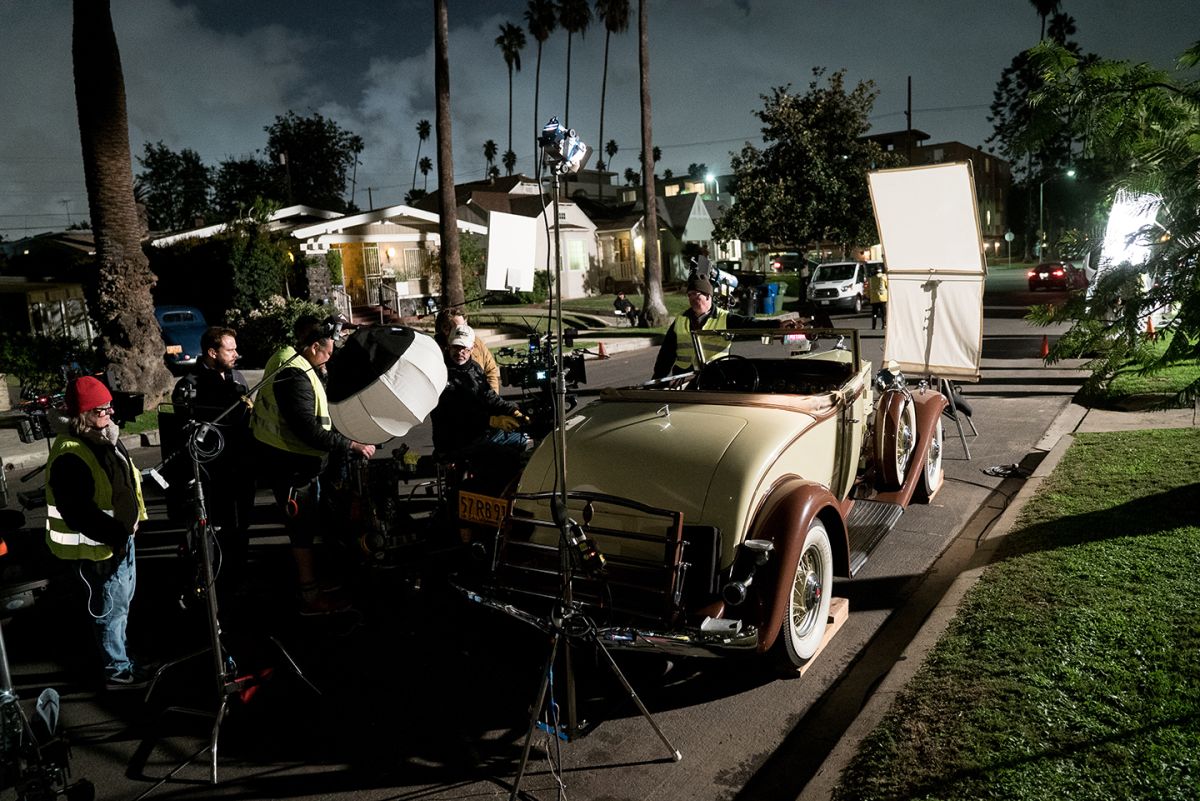
Moder adds that while the production had more time and resources on the pilot, he hasn’t felt the constraints he’d feared he would on the series’ later episodes. “On a pilot, you have to ramp up from nothing,” he explains. “Now we’ve got this moving army that can get into a place, black out some windows, light it, and get a good camera angle and the actors in the right spot very quickly.”
In keeping with Amazon’s mandate that all their shows be shot in true 4K, Moder relies primarily on Sony’s PMW-F55, which he selected after seeing a demonstration on the Sony lot. “That’s been our camera body for both the pilot and the series, aside from a oner we did in the pilot on a Movi — for that we put on an [Arri] Alexa Mini,” Moder recalls. Shooting in Cine E1 mode, the Sony camera recorded 4K raw to AXS cards, with SxS cards as backup, and framed for the 1.78:1 aspect ratio.
In terms of lenses, Moder adds, “For the last five years, I’ve just been loving the T1.3 Zeiss Super Speeds. They’re very fast, and I would say we’re wide-open more often than I care to mention. We’ve got phenomenal focus pullers, Jason Garcia and Jan Ruona, who spoil me. They’ve got this [Preston Cinema Systems] Light Ranger system, where the lenses are already calibrated and they tell you exactly what’s in focus at different distances, so you can be leading it or following it. It makes my job so much easier.” The Last Tycoon was captured primarily with Zeiss Super Speed Mark IIIs. The production made use of Angenieux’s Optimo 25-250mm (T3.5) and 28-76mm (T2.6) zooms on the pilot, and occasionally employed Cooke’s 18-100mm (T3) zoom.

Moder credits his second unit with alleviating some of the pressures of achieving his vision on a show for which he was the sole first-unit cinematographer. “It was a welcome challenge shooting every episode with different directors, and actually overlapping and coordinating crews on ‘double-up days,’” he attests. “Fortunately, my second-unit director of photography, Mike Ozier, is a longtime friend and an excellent cinematographer. He and operator Jason Ellson would take my crew to finish the last day of an episode, while at the same time I would be a couple stages away with capable crew stepping up to start day-one of the next episode with a new director.”
Moder adds that he’s benefited from smart producing, which has given him what he needs to move on the fly. “The production went ahead and spent the money on getting us some of the newest lighting packages,” he says. “Toys like wireless iris control, or LED lighting with wireless connections to make it brighter, darker, bluer or warmer, have allowed us to shoot up to nine pages a day.”
Gaffer Nicholas Kaat affirms that the LED fixtures were a central part of his lighting methodology for the show. “The Last Tycoon is the first time I’ve used mostly LEDs in every aspect, from lighting our sets to lighting our actors,” he says. “Of course, we still use big tungsten units or HMIs when needed, but many of our other lighting instruments were LED. We had everything from Arri SkyPanel S60s and S30s to LiteGear LiteTile LiteBoxes rigged on our sets, and our floor package was mostly SkyPanels, LiteMats, Arri L-Series Fresnels and ETC Source Four LEDs. We chose those instruments not only for their quality of light, but also their ability to quickly adjust color and intensity. All of these fixtures are bi-color, if not also RGB mixing. As much as possible, we gave control of all these fixtures to our lighting-console programmer, Richard Rasmussen, via wireless DMX Cixtennas.”
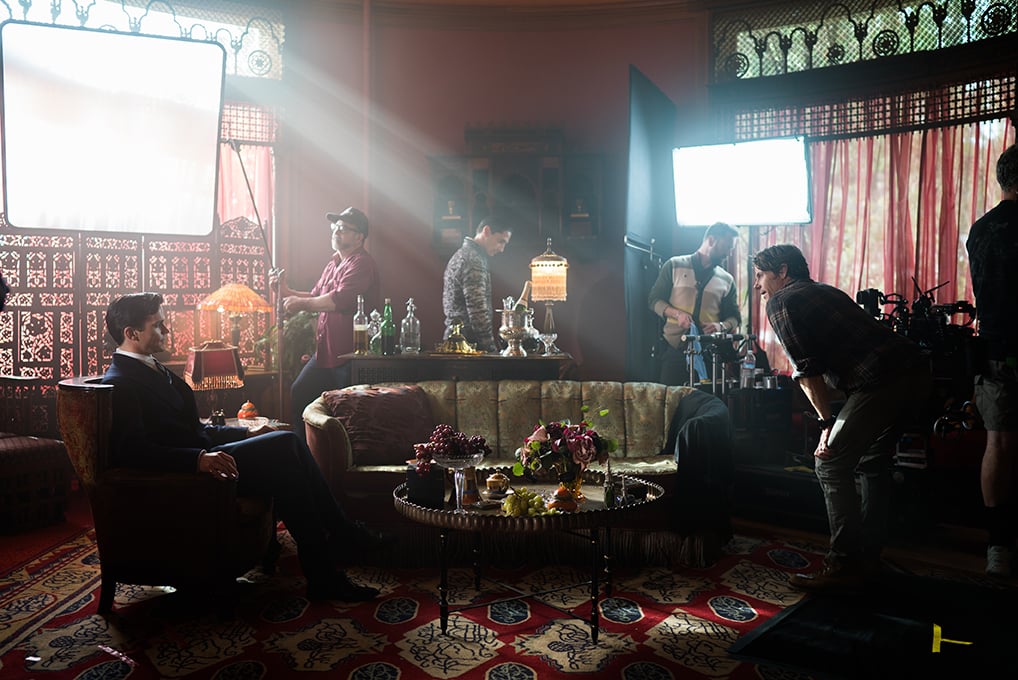
Kaat adds that the tools the crew employed aided Moder in his desire to bring more nuanced lighting than a TV schedule might ordinarily permit. “These choices allowed us to work quickly and precisely,” the gaffer notes. “We could have an average-sized crew working quickly on a very detailed lighting setup, knowing that Danny and I could make our final adjustments to color and intensity from the monitor, without needing electricians and grips to add gel or scrims in the final moments before the cameras rolled.”
Moder shares Kaat’s enthusiasm for LED equipment, adding that his favorite piece of gear is the LED Jem Ball. “It’s just a nice, soft orb that can go in a lot of places,” he says. “It really allows people to get in and out of the space, and not have a push of light in one direction. It comes on and hauls off easily, and actors — especially the ones who aren’t that young anymore — love how it makes them look.”
Moder and Kaat both note the contributions of the grip and electric rigging crews, whose system for prelighting the sets provided an infrastructure for expansion. “I can’t say enough about the confidence and security I had with my riggers, Mike Bonnaud for gaffing and Larry Edwards as rigging grip,” Moder enthuses. “They had intuition for my style and gave us great options and an excellent foundation to keep moving forward.”
The trickiest part, from Kaat’s point of view, came when the production left the lot for sensitive location work. “Many of our locations were protected because of their history and age,” Kaat explains. “That made rigging and prelighting more difficult, but our production designer and set dressers helped us when they could — and Danny, our directors and camera operators helped us when we couldn’t find any places to hide our equipment.”
Moder notes, “Adding to the sensitivity of the historic locations was our need for visual effects to simplify the landscapes back to 1936. John Heller at [FuseFX] had a growing list every day and the results are gorgeous. He was on-set whenever we needed a bit of guidance to make both of our jobs easier, or on the phone if something came up.”

Key grip Pat O’Mara recalls a party scene shot at Greystone Mansion in Beverly Hills, Calif. “No rigging could touch any part of the ceiling or walls,” he describes. “My key rigger, Larry Edwards, installed a freestanding truss that spanned the enormous room, enabling us to light from above.” O’Mara adds that Max Menace Arms were a frequently used tool for difficult-to-reach lighting. “I also introduced Danny to 6-by-8 and 8-by-8 frameless Wag Flags we’ve had made in every diffusion possible,” he says. “It’s a very unobtrusive way to diffuse light without all of the extra hardware and stands.”
O’Mara notes that Moder and the rest of the crew developed a shorthand on set. “It’s always important for me to stay 10 steps ahead of the game plan, especially when dealing with a new set, a new location or a major rig,” he says. “The working relationship with Danny and Nick, whom I worked with closely on each lighting setup, was pretty seamless.”
“We fell into a groove early in the series,” Kaat concurs. “On the first episode, it felt like we were already clicking. Danny always knew the mood and time of day he wanted to convey, and that gave us a solid jumping-off point. Sometimes Danny knew exactly what he wanted the lighting to be, and it was my job to work with Pat to get it there. Other times he would only have a feeling and I would pitch him ideas until something clicked. Sometimes we would build on the ideas he had and sometimes he would build on ours, but it was always in service to the story and style of the show.”
That style, according to Moder, relies on a kind of restrained elegance evocative of the Sidney Lumet movies that he and Ray saw as models for their previous collaboration. “Those strong frames, with a lot of depth and clarity, really resonate with me,” Moder says. He adds with a laugh, “I guess this show is kind of like a Sidney Lumet version of Singin’ in the Rain.”
Moder credits his A-camera dolly grip, Jim Leidholdt, with executing many of the series’ most elaborate camera moves. “So many shots would have been impossible without him,” the cinematographer attests. “It’s a thing of beauty, the way he understands the mechanics, along with the timing of the actors and the timing of the operator. Of course, a dolly grip is operating in a way, when they’re doing their job the way Jim does.”
The fluidity of Leidholt’s dolly moves was dictated by the overall approach Moder took to movement and composition. “My A-camera operator, Kim Marks, and I decided on a philosophy where we would move the camera when we really needed to, not for some arbitrary reason,” he explains. “I want it to feel natural; I don’t really like pulling walls if we don’t have to. I like to make it feel like we’re in a real space. The biggest challenge is making the sets feel like they’re not sets, and finding new but motivated angles in rooms we go into again and again.”
Moder submits that sometimes the style is at odds with his natural instincts. “It’s funny, because most of the commercials I do are handheld,” he says. “This is such a departure from that, which is fun, but sometimes I want to shake it all up. That’s where I rely on Kim — he helps me find a more fluid way of responding to those impulses.”
In addition to the production’s camera and lens packages, the cinematographer also credits Pandora Technology’s Pluto Colour Management System LUT box enabling him to achieve the precise looks that he’s after. “For the pilot,” he says, “we did the DI at Technicolor Hollywood with Tim Vincent, who’s going to be doing all the coloring on the series with Autodesk Lustre. He created 16 or 17 distinct looks for the pilot, which have now been dumped into this Pluto Box. As we’re putting the scene together on set, I’ll think, ‘I want this to be all warm.’ And then there’s [the ability to make it] super-warm, or neutral, or desaturated, and then there are cool shadows — so for each scene, we just take that look and apply it. We made a black-and-white LUT for when we’re shooting black-and-white. I can just go onto my monitors and choose which LUT looks good and hit the button, and that’s what we’re all looking at.
“[I roll] the iris just a little bit the whole time,” Moder adds, “and we’ve got the LUT, so by the time we approach finishing, we’re a lot closer [to the final look that we’re aiming for]. Technicolor then gets the raw image and they just apply [the given LUT] for dailies. Maybe not every LUT works for every shot in the scene, so there will be some massaging.”
Moder notes that the final color correction has not only allowed him to refine The Last Tycoon, but it has also given him ideas for future projects. “The more I familiarize myself with the post process and the new LUTs, the more excited I get about the possibilities,” he says. “It’s getting easier and easier to achieve your vision, and that just makes me want to push things further every time. I admire a cinematographer like Darius Khondji [ASC, AFC], who on Lost City of Z [AC May ’17] is just pushing himself and transporting the audience,” he continues. “He’s got a vision, and that’s ultimately what you’re hired for; it’s about putting energy and texture into the frame. The more elegantly you can insert yourself into the project, the more satisfying it’s going to be for everyone.”
Moder’s desire to express himself was made easier by a crew with whom he found an instant rapport. “The new paradigm supported by streaming services like Amazon,” he says, “where you have just a little bit more money to make the show, helps you find people who are really good at their job and are willing to work with you for a few months and be fully committed. You’re in Los Angeles making a small feature every nine days, using the best crew and the best gear, and everybody’s into it. It reminds you of the maverick filmmakers that this story is about — the innovators.” He smiles and adds, “You know, it’s really the best job ever.”






